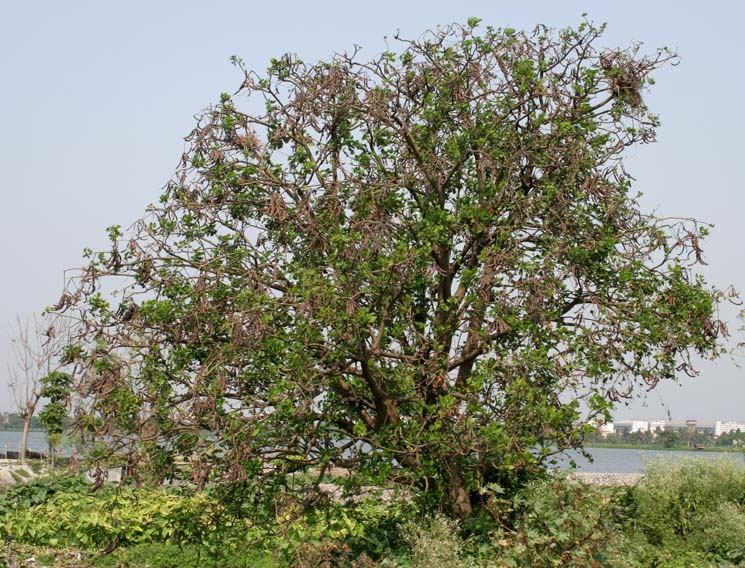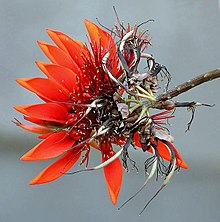
Also called Indian coral tree, this deciduous tree is native to warm coastal areas of tropical and subtropical India and Malaysia. It is a member of the bean family, Fabaceae, that also includes lupine, mimosa, and black locust. The trees grow up to 89′ tall and have many stout branches with gray, smooth bark and large prickles. The pinnately compound, variegated leaves have prickly leafstalks about 10″ long and 3 heart-shaped leaflets about 6″ long. In late winter or early spring before the leaves emerge, dense terminal clusters of crimson flowers 2-3″ long appear and attract hummingbirds. The fruit is a cylindrical, bean-like pods about 15″ long and contains 5-10 egg-shaped, reddish-brown to black seeds. The trees are grown as shade trees and in hedges and living fences and are also valued for culinary and medicinal uses as well as for livestock fodder, soil enrichment, and green manure. The genus name, Erythrina, comes from the Greek word erythrose, meaning red and refers to the color of the flowers. The specific epithet, variegata, is from the Latin word varius, meaning various, and refers to the markings on the leaves. Photo Credit JM Garg Wikipedia

Type: Deciduous tree
Outstanding Feature: Flowers
Form: Broad, spreading crown
Growth Rate: Rapid
Bloom: Terminal clusters of 2-3″ long crimson flowers from late winter to spring.
Size: 89′ H
Light: Full sun
Soil: Average, moist, well drained but tolerant of waterlogged and saline conditions
Hardiness: Zones 9-10
Care: Prune to improve structure.
Pests and Diseases: Fruit piercing moth ( Othreis fullonia)
Propagation: Branch cuttings, seed
Outstanding Selections:
‘Alba” (white flowers)
var orientalis ( veins of leaflets highlighted with yellow or pale green)
‘Parcellii’ (yellow variegated leaves)
‘Tropical Coral’ (column-shaped)
Photo Credit: Wikipedia